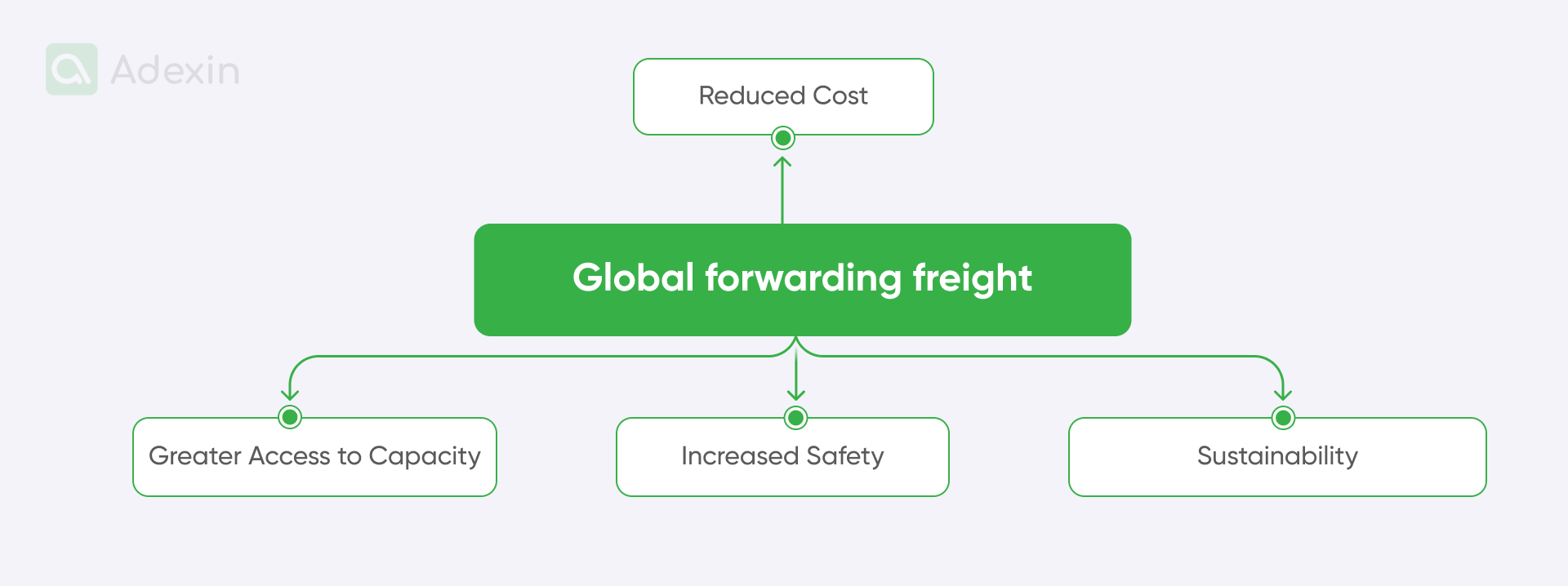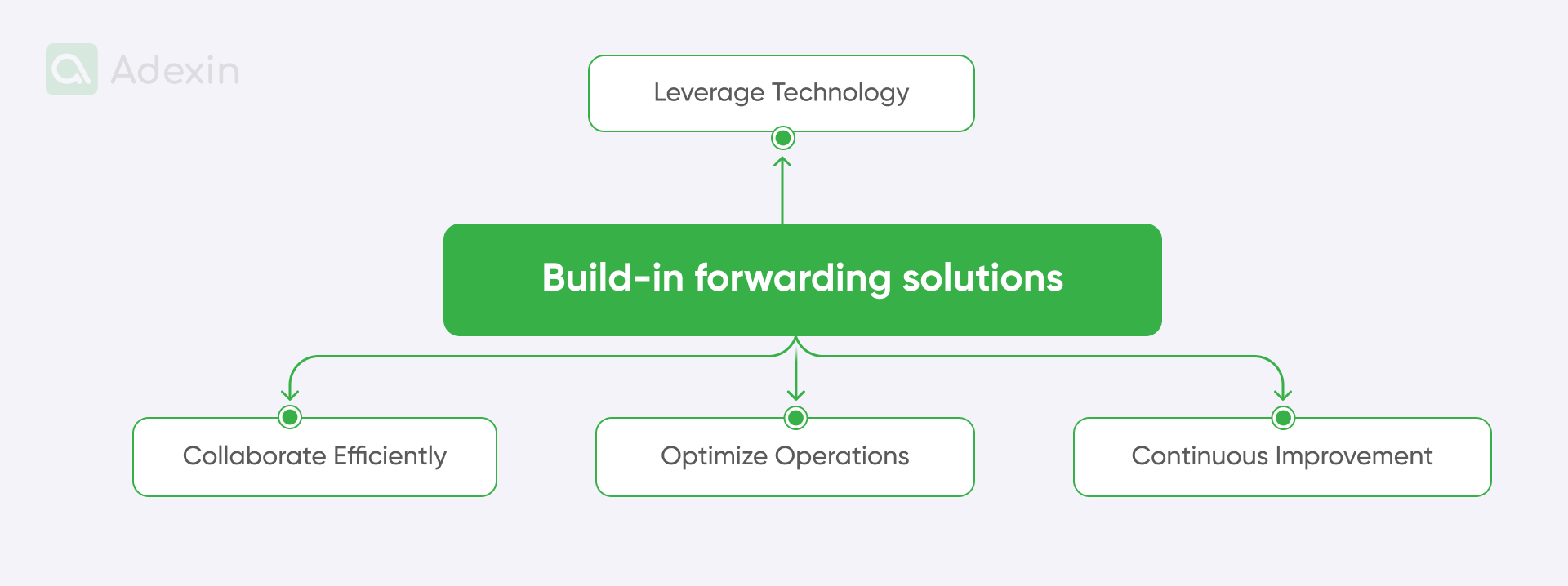Here, we have prepared helpful information and substantial tips for handling intermodal shipping. Being in the transport business, you have probably already faced some demand for diversification offered by intermodal transport. Many benefits come with using this transport mode.
As everything in transportation, logistics, and supply chain should be well optimized to get the best out of the business, you may need to consider solutions to help you get the best out of your transport. It means you seek some way to plan your shipment better and cut costs. Here, you may need to look after custom software development in transportation. So, let's look at how you can optimize your intermodal shipping.
What is the shipment planning process?
To better understand the value delivered by intermodal shipping, it is worth looking at EUROSTAT statistics. Research shows that in 2018, across the 28 member countries of the EU, 76.50% of freight was transported by road, 18.00% by rail, and the remaining 5.50% by inland waterways.
That was well said because by examining these metrics, we can directly conclude that there might be a lot of benefits hidden behind using this intermodal transport. However, we will delve into that a bit later in this article. First and foremost, we would like to focus on the shipment planning process for intermodal.
Here below are the main characteristics of the intermodal shipment planning process:
Selecting locations
In the context of intermodal shipment planning, optimizing the location of facilities plays a crucial role. It involves strategically determining the planning of key facilities to enhance the overall efficiency of the intermodal network.
Network design
Intermodal shipment planning requires careful consideration of network design to optimize the definition of transportation networks. Decisions are related to the general network structure and specific service network design. These are integral to this element of the planning process.
Scheduling
The scheduling aspect in intermodal shipment planning encompasses creating efficient service schedules. It's all about managing transshipment schedules and coordinating shipping operations. Here, you must also consider the overall transport schedule and personnel.
Transportation
A fundamental element in intermodal shipment planning involves defining the best services to transport commodities across different modes. It includes route selection and planning. In this case, operational and tactical/strategic perspectives must be considered.

Fleet renewal
Intermodal shipment planning involves decisions regarding the renewal and optimization of the transportation fleet. It ensures that the fleet remains efficient, cost-effective, and aligned with the overall goals of the shipment process.
Resource allocation
Efficient resource allocation is crucial in intermodal shipment planning. This element involves making decisions about resources, such as vehicles and equipment. All should be allocated to different locations and operations to optimize the overall process.
Vessel and locomotives schedule recovery
In railway and maritime transportation within intermodal shipments, vessel and locomotive schedule recovery becomes a critical element. Planning to recover vessels, wagons, and locomotive schedules after disruptive events is essential to maintaining the smooth flow of intermodal shipments.
Routing
Identifying optimal routes for single or multiple vehicles is a critical element of intermodal shipment planning. It involves making decisions that optimize the routes taken by various modes of transportation to ensure efficiency and cost-effectiveness.
None of this would be possible without digital data, which is essential for preparing accurate forecasting and plans. This trend stems from the broader subject of digitization and advances in all modes of transportation.
What are freight consolidation services?
You can use various ways of shipping to deliver your goods to the destination. Everything loaded in the container can be shipped using trailers for road shipping, wagons on rails, vessels through inland waterways, and other modes of transport
We can assume that you need to deliver your goods from the Port of Rotterdam in the Netherlands to Frankfurt am Main in Germany. The best way to do this might be to ship your container by vessel through the river to Venlo in the Netherlands and then load it onto a trailer to transport it further on the well-developed highways in Germany. It is how you can save costs for overall road shipping and also remain environmentally friendly, as vessels consume fewer fossil fuels and commit to lower CO2 emissions.
Streamline global forwarding freight with optimization software
How can a software solution streamline your global forwarding freight for international shipping? We partially answered this question by giving an example of transport optimization, but there was a lack of explanation on how to do it efficiently. The software solution for optimized shipping is worth mentioning. Using the software, you can holistically see all the transportation modes available for intermodal shipping and gain insights to establish cost-effective planning.

Here, we selected four main advantages of using software for intermodal shipping:
Reduced сost
Intermodal transportation offers significant cost savings, especially when using rail for overland transportation. This significant advantage is due to lower fuel expenses, minimized handling fees, and overall cost-efficiency gains.
Greater access to capacity
Intermodal operations provide better access to capacity, especially on high-traffic routes. It becomes especially beneficial during periods of limited truck capacity or in the face of a driver shortage.
Increased safety
Security is an overriding concern in intermodal transportation, with several measures to reduce the likelihood of theft, accidents, or damage. By using continuous rail transport, you can limit the handling of goods during transport, and stringent security measures at terminals contribute to a safer transportation environment.
Sustainability
Intermodal shipping is becoming a sustainable choice, taking advantage of the fuel efficiency of rail transportation and reducing its environmental impact. This commitment to sustainability extends to reducing the carbon footprint, with intermodal transportation estimated to be one and a half to five times more energy efficient than trucking.
Shipping optimization and built-in forwarding solutions
Intermodal transport optimization can be achieved by deploying a custom software solution. This means you can benefit widely from various functions to optimize your transport mode and find the best possible way of delivery.

Here is what you can do for forwarding solutions in intermodal shipping by using a dedicated software solution:
Leverage technology
You can enhance visibility, communication, and control in intermodal transportation by utilizing software tools. You can automate processes like booking and invoicing for streamlined operations.
Collaborate efficiently
You can establish strong relationships with stakeholders and collaborate to improve the quality and reliability of intermodal transportation. Further, you can negotiate fair contracts and share information for better coordination.
Optimize operations
One of the core functionalities is to enhance efficiency at each stage of the transport chain. You can ensure proper cargo handling and minimize idle times. Following these, you see direct benefits in streamlining loading, unloading, and storage processes for improved overall performance.
Continuous improvement
Nothing can better ensure your operations with continuous improvement than software, where you can regularly evaluate key indicators like time and costs. You can address gaps and opportunities for ongoing enhancements.
Intermodal freight shipping characteristics and improvement models
As we touched on the last point of continuous improvement, it is genuinely worth elaborating more on this subject in the context of software. You cannot genuinely enhance your business without monitoring all metrics daily. Only by collecting data, you’ll be able to create more specific and accurate forecasting.
Here are a few selected elements that can help you improve your intermodal shipping by using custom software solutions:
Gain insight into key metrics with custom software, which include shipment status, cost performance, and many more.
Use real-time tracking and monitoring to identify patterns and bottlenecks, as well as other areas for improvement.
Utilize comprehensive data analytics to make informed decisions that help you streamline processes and increase overall productivity.
In this case, let's at least briefly look at our case for a transport company from the USA. The project included the development of a cargo tracking system from pickup to delivery and payment, improved documentation during delivery, and much more. And this is just one of the custom developments that includes all of the above. Any solution can be customized, taking into consideration individual needs.
Are you in search of a reliable tech partner?
Adexin can help with advanced logistics solutions
Contact usFinale takeaway
After reading this article, it should be more precise for many of you how a custom software solution can improve your intermodal shipping. It's very possible that in the future, we will rely more and more on intermodal transport as it is cost-effective and environmentally friendly. It is also more accessible to ship via rails or vessels. Therefore, it's worth considering the implementation of custom software that will have the ability to enhance your shipping models and let you be ready for the future.
At Adexin, we're helping businesses implement solutions that support their intermodal shipping. Using our expertise, we search for the most suitable software solutions to keep your transportation, logistics, and supply chain operations. Contact us today to see where we can support your intermodal shipping solutions.

